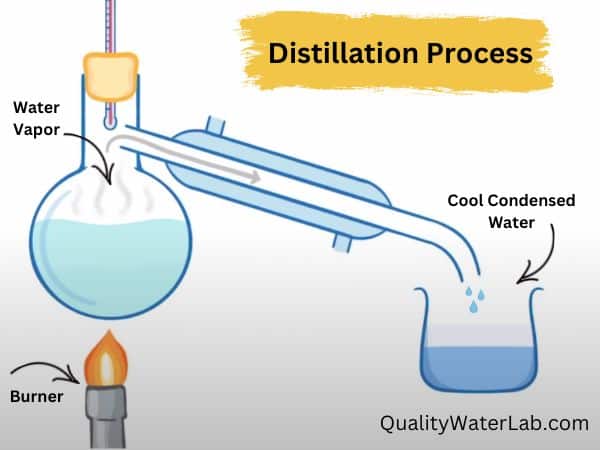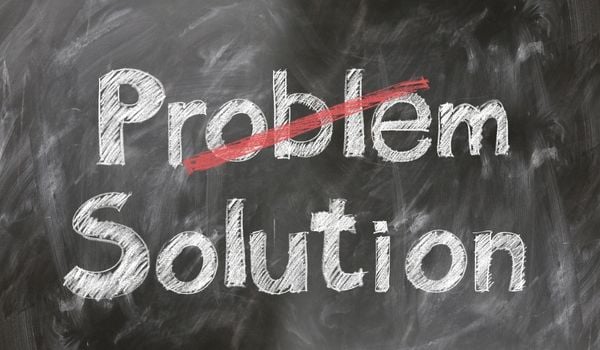Fluoride is a hot topic — praised for its role in cavity prevention, yet increasingly questioned for possible health effects. If you’re looking to cut back, one method that often comes up is distillation. But does it actually work?
Let’s clear the steam: here’s what you need to know about fluoride, water distillers, and whether this old-school tech holds up.
✅ Quick Takeaways
- 🧪 Distilling water does remove fluoride — along with many other impurities.
- ♨️ It works by boiling water into steam, then collecting it — leaving fluoride and most contaminants behind.
- 💧 Distilled water is nearly pure, but it can taste flat and takes time to produce.
- ⚠️ Some chemicals with a low boiling point may escape the process — distillers aren’t perfect.
- 🧠 Want to remove fluoride and other toxins? Pairing distillation with activated carbon or reverse osmosis gives better all-around protection.
🧪 What’s the Deal with Fluoride in Water?

Fluoride is a mineral that’s naturally found in: soil, rocks, and groundwater. It’s often added to municipal water systems to help fight tooth decay — a public health move that started back in the 1940s.
But here’s the catch: we now get fluoride from more than just water. It’s also in: toothpaste, mouthwash, and even some foods and beverages. That extra exposure has some people rethinking how much is too much.
💡 Fun fact: Grand Rapids, Michigan was the first U.S. city to add fluoride to public water in 1945.
💨 How Distilling Water Actually Removes Fluoride

Distillation works by heating water until it turns to steam — then cooling that steam back into liquid form. Since most contaminants (including fluoride) don’t evaporate with the steam, they’re left behind in the boiling chamber.
🧪 Here’s why it works:
- Fluoride has a much higher boiling point than water.
- When water vapor rises, fluoride stays put.
- The result? Clean, low-fluoride water collects in the storage container.
💡 Bonus tip: Some distillers run the water through this process twice (called double distillation) for even lower levels of leftover minerals.
🧼 What Else Does Distillation Remove (Besides Fluoride)?

While distillation is known for reducing fluoride, it’s not a one-trick process. It also removes a wide range of other contaminants — especially those with higher boiling points than water.
✅ Common contaminants removed include:
- Lead and arsenic
- Bacteria and viruses
- Chlorine byproducts
- Nitrates and some heavy metals
- Microorganisms and sediment
💡 Heads-up: Some chemicals with low boiling points — like benzene or certain pesticides — can evaporate along with the steam and slip through. That’s why some distillers come with post-carbon filters to catch those extras.
Distillation is powerful, but it’s not perfect. For ultra-clean water, it pairs well with filters like activated carbon or reverse osmosis — especially if your water contains a mix of chemical and mineral-based contaminants.
📦 Is Distilling Water the Right Fit for You?

Distillation is one of the oldest and most effective ways to purify water — especially when you’re dealing with: fluoride or heavy metals. But like any solution, it has its trade-offs. Here’s a quick look at what it can (and can’t) do for your daily routine:
| 👍 Pros | ⚠️ Cons |
|---|---|
| ✅ Removes fluoride, lead, bacteria, and other tough contaminants | ⏳ Slow process — takes hours to produce a gallon |
| ♻️ No wastewater like RO systems — more eco-friendly | 🔌 Requires electricity — won’t work during outages |
| 🧳 Portable and easy to set up — no plumbing needed | 🚫 Doesn’t remove all chemicals (like VOCs with low boiling points) |
| 💧 Ideal for CPAP users and medical device water | 😶 Water tastes flat to some due to lack of minerals |
| 💰 Budget-friendly option for small households | 🫗 Limited output — not ideal for large families |
🌱 Bottom Line:
If your main concern is fluoride — and you don’t mind waiting a bit — a countertop distiller is a solid, low-maintenance way to get peace of mind in every glass. For faster flow or broader protection, pairing with a carbon post-filter or considering a reverse osmosis system might be worth exploring.
🧪 What If Distilling Water Isn’t Enough?

Distillers are great for stripping fluoride — but they’re not always the most practical solution if you need more water, faster. Fortunately, a few other systems are also proven to reduce fluoride — they come in a range of styles for different needs and budgets.
| 🚰 Filter Type | 🔎 Fluoride Removal | 💡 Best For |
|---|---|---|
| 🔄 Reverse Osmosis (Under-sink or whole-home options) |
Up to 99% fluoride removal | Families who want clean, fluoride-free water for drinking and cooking |
| ⚪ Activated Alumina | Removes up to 95% of fluoride + arsenic | Well owners or anyone dealing with naturally occurring fluoride |
| 🦴 Bone Char | Up to 90% fluoride reduction | Eco-conscious users looking for a natural filtration option |
| 🧪 Multi-Stage Filters (Carbon + alumina or RO blends) |
Varies — but can be very effective depending on configuration | Homes with multiple contaminants — not just fluoride |
👉 Still unsure how much fluoride is too much? The World Health Organization acknowledges both the dental benefits and potential risks of excess fluoride in water — and the EPA provides clear guidance on recommended limits in the U.S.
🧠 Final Thoughts:
Choosing the right system depends on your fluoride levels, water source, and daily water needs. Whether it’s a compact distiller, an RO system, or a fluoride-targeting whole house filter, testing your water first ensures you don’t overbuy (or underfilter).
 149 people found this helpful. Was this guide helpful to you?
149 people found this helpful. Was this guide helpful to you? 

